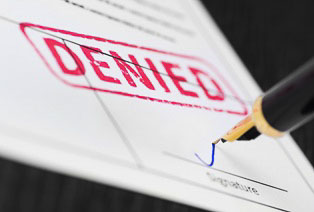Mariya Frost of the Washington Policy Center provides insight of WSDOT’s actions to be in compliance with the governor’s vaccine mandate
Mariya Frost
Washington Policy Center
On October 18, 2021, the Washington State Department of Transportation (WSDOT) fired 402 employees in compliance with the governor’s vaccine mandate.

Many employees submitted religious and medical exemptions to the vaccine, yet the vast majority of those whose exemptions were approved were fired anyway on the basis that the agency said they could not “accommodate” them. Accommodation simply means an adjustment to the work environment that allows an employee to continue working. For some, this two-step process of having an exemption approved only to be denied accommodation later felt like an underhanded way for the state to deny an exemption request without actually denying it up front.
There should be no difference in the state’s ability to accommodate employees in the same job class based solely on the reason for an exemption. Once the exemptions are approved – according to WSDOT, accommodations are subject to approval “based on the essential functions required of the position” – not based on whether the exemption was medical or religious.

So, if the state can accommodate someone with an approved medical exemption, they should be able to offer the same accommodation to someone with an approved religious exemption who is in the same position with the same essential functions.
Yet the data we received suggest that the state treated exemptions very differently, appearing to discriminate against people with approved religious exemptions – leaving ferries, road crews, and other positions short-staffed.
Overall, WSDOT officials did grant accommodations to some employees with religious exemptions – a total of 11 percent according to their data. They granted accommodations to a much higher 87 percent of employees with approved medical exemptions.
A closer look, as illustrated in the examples below, shows this difference is more significant within each job classification. (The full database can be found here.)
For example, all but one of the able seamen for Washington State Ferries (WSF) with approved medical exemptions were accommodated (83 percent approval). Those with religious exemptions were all denied accommodation despite having the same job classification.
Similarly, bridge maintenance specialists (and leads) at WSF who had approved medical exemptions were all accommodated. Those who had approved religious exemptions were all denied accommodation.
Oilers at WSF who had approved medical exemptions were all accommodated. Those who had approved religious exemptions were all denied accommodation.
Transportation systems technicians (classifications B, C, and D) who had approved medical exemptions were all accommodated. Those who had approved religious exemptions were all denied accommodation.
We looked at a few other job classifications that had a comparatively large number of exemptions.
The biggest category was highway maintenance workers (1, 2 and 3) – a total of 130 approved exemptions. These are some of the employees WSDOT sorely needed going into the winter season. WSDOT officials accommodated 79% of employees with approved medical exemptions and denied accommodation to all 91 employees with approved religious exemptions.
For transportation engineers (1 through 5), WSDOT officials accommodated 94% of those with approved medical exemptions and 19% of those with approved religious exemptions.
For transportation technicians (1, 2 and 3), WSDOT officials accommodated 75% of those with approved medical exemptions (3 of 4 total) and 5% of those with approved religious exemptions (1 of 20).
Interestingly, WSDOT’s Human Resource Consultants (1 through 4) who had approved religious exemptions were all accommodated.
The extraordinarily low rates of accommodation for approved religious exemptions are unsurprising given the Governor’s office stating in August when the vaccine mandate was first being developed that they would accept “medical for sure; and religious (if we have to; if yes as narrow as possible).”
Mariya Frost is the director of the Coles Center for Transportation at the Washington Policy Center.




